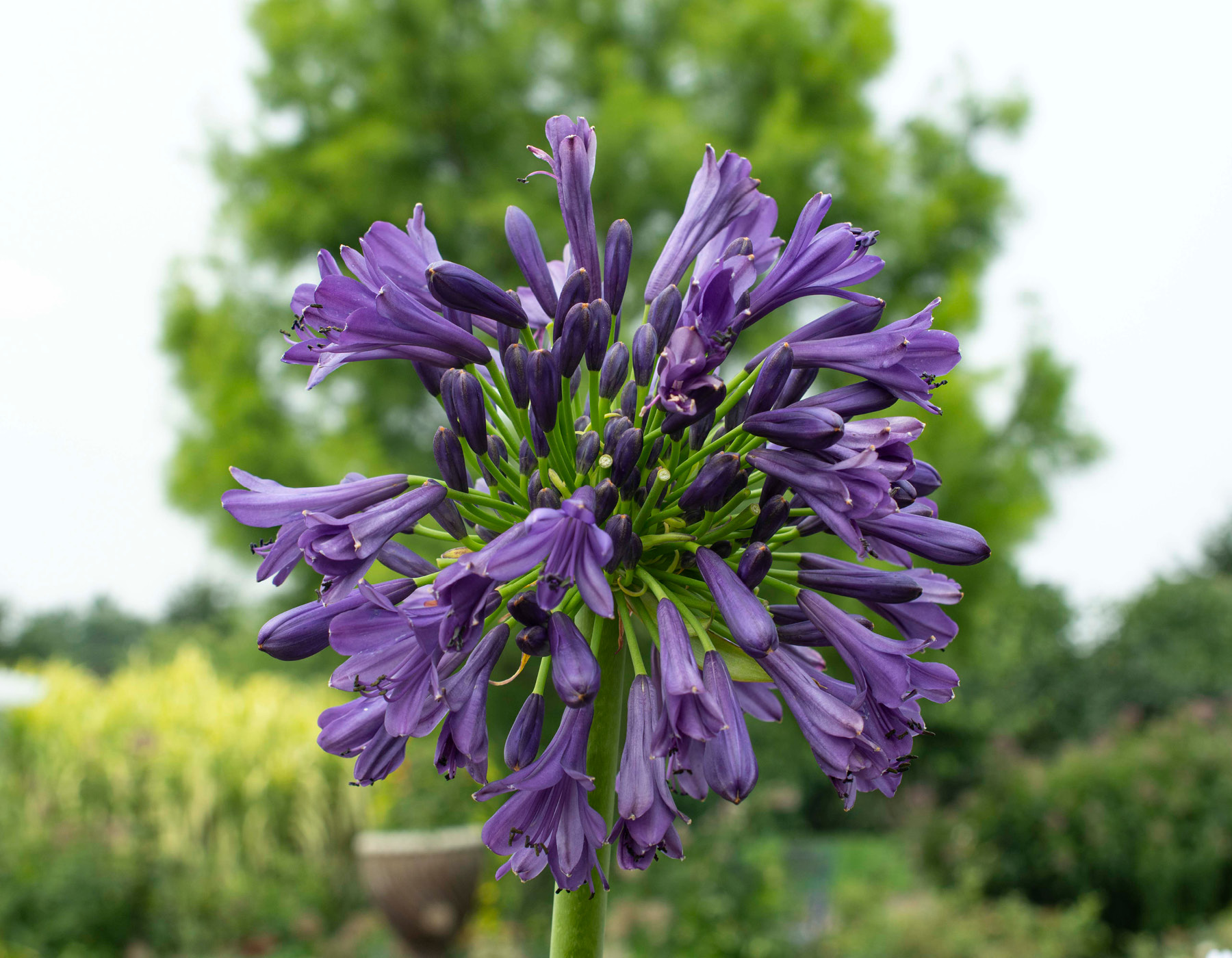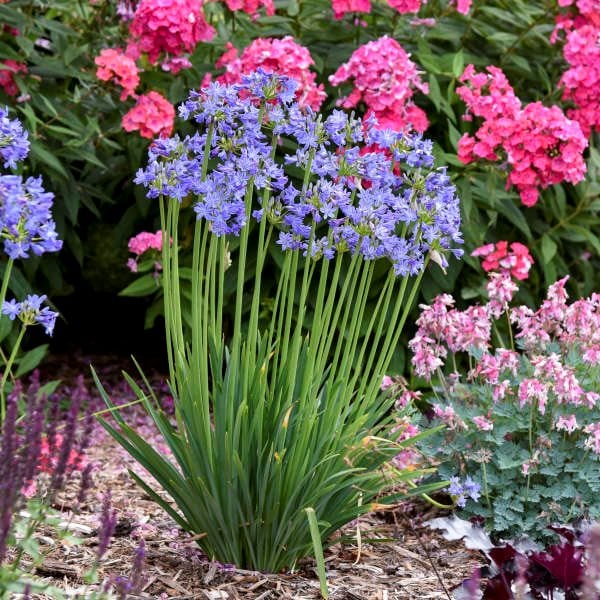Agapanthus Growing Problems: Dirt, Sunlight, and Watering
Wiki Article
Releasing the Secret to Successful Agapanthus Farming: Tips and Techniques for a Flourishing Garden
In the realm of horticulture, growing agapanthus effectively needs a tactical method that incorporates various aspects of plant treatment. By recognizing the subtleties of agapanthus cultivation, one can produce an atmosphere where these plants thrive and flower generously.Planting Agapanthus: Finest Practices
When growing Agapanthus, proper dirt prep work is vital for guaranteeing effective growth and development of these attractive flowers. Agapanthus, generally referred to as Lily of the Nile or African lily, thrives in well-draining soil with a somewhat acidic to neutral pH level - Agapanthus. Before planting, it is critical to amend heavy clay dirts with organic issue such as compost or peat moss to improve water drainage and offer vital nutrients for the plantsTo grow Agapanthus, select a location that receives full sunlight to partial color, as this will certainly promote healthy and balanced development and plentiful blooming. Dig a hole two times the diameter of the plant's root sphere and position the Agapanthus at the same deepness it was formerly expanding. Delicately backfill the hole with soil, pushing down firmly to eliminate any kind of air pockets around the origins.
Water the recently grown Agapanthus completely and remain to keep the soil evenly moist, particularly during the plant's active expanding period. Agapanthus. Using a balanced plant food once a month can better sustain the plant's development and blooming. By adhering to these ideal methods for planting Agapanthus, you can produce a magnificent display screen of these exciting flowers in your garden
Suitable Dirt Conditions for Agapanthus
For ideal growth and flowering success of Agapanthus plants, making sure the dirt conditions are perfect is critical. Agapanthus likes dirt that is rich in nutrients, so integrating a well balanced plant food throughout the expanding season can advertise healthy and balanced growth and vibrant flowers.
Watering and Fertilizing Tips
To make certain healthy and balanced development and lively blossoms, correct watering and feeding strategies are essential for effective Agapanthus farming. Agapanthus plants gain from routine watering, especially during the growing period. It is recommended to water deeply as soon as a week, making sure the dirt is damp yet not soaked. Throughout hot weather condition or in pots, even more regular watering may be essential to avoid the soil from drying completely.When it involves feeding Agapanthus, a well balanced fertilizer with equivalent parts nitrogen, phosphorus, and potassium can be pop over to this web-site applied in the springtime to promote healthy and balanced development and flowering. Slow-release fertilizers are ideal for providing nutrients progressively over an extensive period. Avoid over-fertilizing, as this can cause extreme vegetation development at the expenditure of blossoms.
In addition, integrating raw material like garden compost into the soil can boost nutrient degrees and enhance soil structure, assisting in the general wellness of the Agapanthus plants. By complying with these watering and fertilizing tips, garden enthusiasts can ensure their Agapanthus plants grow and create magnificent screens of blossoms.
Pruning and Deadheading Methods
Proper pruning and deadheading methods play a vital duty in maintaining the health and looks of Agapanthus plants, complementing the necessary techniques of watering and feeding for effective cultivation. Pruning Agapanthus involves removing spent blossom heads, yellowing or dead fallen leaves, and overall shaping of the plant to promote much better development. index Deadheading, the procedure of eliminating discolored flowers, not only boosts the plant's appearance however likewise motivates additional growing.When deadheading Agapanthus, it is advisable to snip off the flower stem at the base utilizing sharp, clean shears. This process redirects the plant's power from seed manufacturing back into root and vegetation development, promoting a healthier and much more durable plant. Regular deadheading can prolong the flowering duration of Agapanthus and avoid self-seeding, which can cause congestion.
In regards to trimming, Agapanthus usually advantages from a light trim after blossoming to clean up the plant and encourage fresh growth. Reducing the spent flower stems and removing any type of broken or dead foliage helps maintain the plant's vigor and overall look. Nevertheless, it is crucial to stay clear of reducing into the crown of the plant, as this can compromise its health and wellness.

Protecting Agapanthus From Vermins and Diseases
Applying effective parasite and illness management techniques is crucial to protecting the health and vigor of Agapanthus plants in cultivation. Agapanthus are generally durable plants, yet they can still succumb to different bugs and illness if not appropriately cared for. One usual pest that influences Agapanthus is the Agapanthus borer, a caterpillar that tunnels right into the plant, triggering damages to the leaves and flowers. To prevent problems, routine assessment of the plants is vital. If borers are identified, they can be by hand eliminated, or insecticidal soap can be used Bonuses as a control measure.In addition to pests, Agapanthus are susceptible to diseases such as root rot and fungal leaf spots. By remaining attentive and resolving insect and disease issues promptly, garden enthusiasts can assist their Agapanthus prosper and prosper.

Conclusion
To conclude, effective growing of agapanthus requires proper growing techniques, ideal dirt conditions, ample watering and fertilizing, routine pruning and deadheading, and defense from conditions and parasites. By complying with these tips and tricks, gardeners can guarantee a growing garden full of stunning agapanthus blossoms. Agapanthus. Bear in mind to maintain regular treatment and focus to detail to advertise the wellness and long life of these sensational plantsWhen planting Agapanthus, correct soil preparation is crucial for making sure successful development and development of these gorgeous blossoms.Water the freshly grown Agapanthus extensively and proceed to keep the soil equally damp, particularly throughout the plant's active expanding season.For optimal growth and flowering success of Agapanthus plants, guaranteeing the dirt conditions are suitable is critical. When transplanting or planting Agapanthus, make sure the dirt is well-prepared to supply the needed foundation for the plants to develop themselves efficiently. One usual pest that impacts Agapanthus is the Agapanthus borer, a caterpillar that tunnels right into the plant, creating damage to the leaves and blossoms.
Report this wiki page